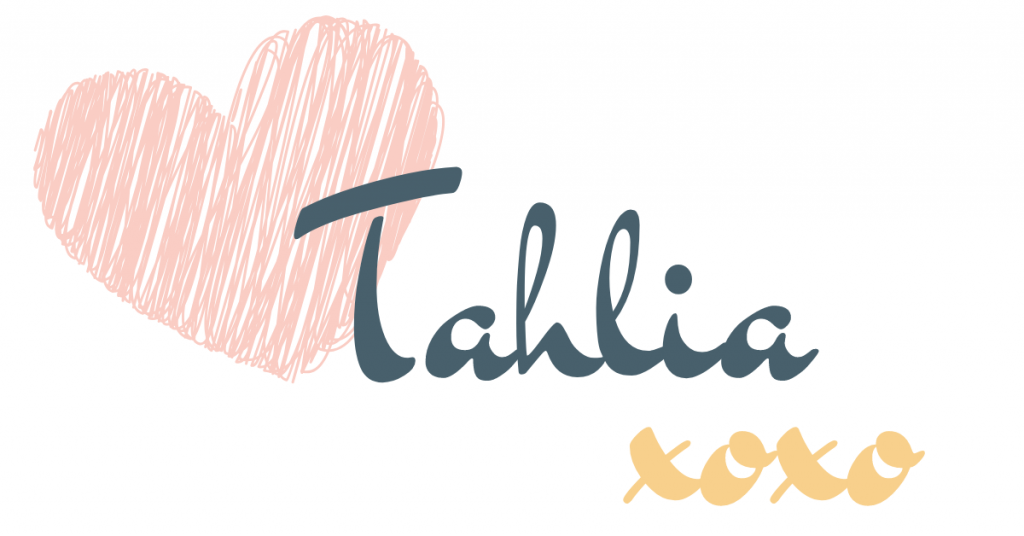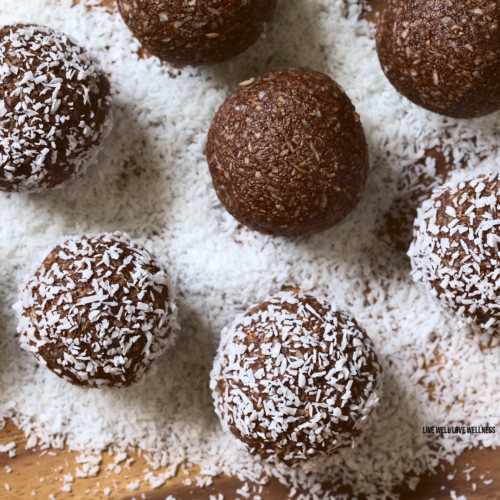How to go gluten and dairy free for better health.
I’ve got five tips I want to share with you. So let’s dive in.
Tip 1 – Why Go Gluten and Dairy Free
The first tip is all of our understanding why it’s important to go gluten and dairy free.
So let’s first talk about the reason why we should consider going gluten free.
Why Go Gluten Free for Better Health
Gluten is definitely under the spot light and has been for years.
This has all occurred with good reason!
The gluten containing wheat grain has been modified (to increase gluten levels) and we know ancient grains are very different to the wheat grains we find today.
So what happened?
Big corporations modified the wheat grain to contain more gluten, which in turn made wheat an artificially modified food.
And so how we know wheat now and what wheat was traditionally, is very different.
Increasing the gluten in our bread products has seen an increase in intolerances, reactions and the ability for our body to digest these foods.
We find this in our children and in adults as it affects everyone and does not discriminate on age.
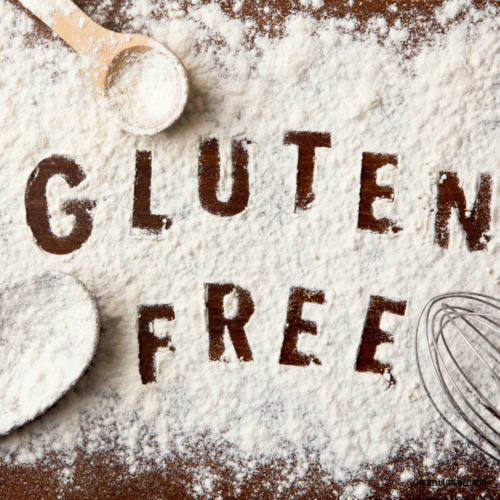
Even our babies can have reactions to gluten.
As we think about gluten as a modified food, it no longer is a real food, and it no longer serves us as a nutritional choice for our body.
In fact, modified wheat or wheat with high levels of gluten, create a lot of inflammation and trigger a negative immune responses in our body.
This is why we have so many issues with gluten.
Some people eat gluten and feel bloated, they can experience stomach pains, discomfort and irritated skin such as eczema.
All the different, little triggers the body tells you, it is pleading with you to stop eating gluten because it can’t digest it.
Gluten is not serving you whether you have an intolerance or not, inflammation is still created in the body and we all know inflammation leads to disease.
So you need to understand that gluten within the wheat grain has been modified.
This food is no longer real., and for this reason we need to avoid it and feed our body nutritious, real wholefoods.
Hopefully that makes sense and is clear for you because this is a really important part to understand.
Now you can start to understand and appreciate why people say to stay away from wheat.
They know why it is not beneficial to your health and are trying to help you make healthier choices.
Why Go Dairy Free for Better Health
Dairy is, I guess, something that goes way back, you know our parents and their parents had cows and they would milk the cow and drink the milk (raw).
These days, our meat milk is so modified, changed and heavily processed it’s not real milk anymore.
Raw cows milk starts out with a yellowish tinge to it and ends up pure white after current processing.
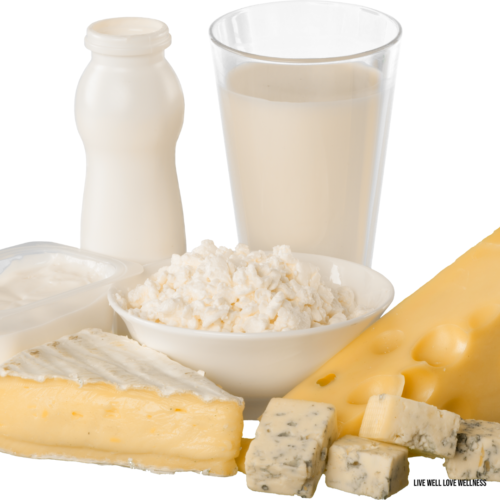
The milk we consume today has been modified and heavily processed to appeal to its customers.
So when the milk is first obtained from the cow it goes through processing before ending up on the supermarket shelf.
Pasteurisation of the Milk
Pasteurisation is the first step of the process.
Pasteurising is heating the milk to high temperatures, which is a heat treatment, a really, really hot heat treatment.
Now in raw milk we find lactase, which is a digestive enzyme naturally occurring in milk, that helps us to digest milk.
We as humans don’t have that natural ability. to digest milk and so we rely on the naturally occuring enzymes in milk to help our body to digest it.
The problem with pasteurisation is that when they heat the milk to those high temperatures, those lovely, helpful digestive enzymes that help us to digest dairy milk are destroyed.
When we lose these enzymes, we then have issues with digesting the milk, and our body tells us in so many different ways.

Homogenisation of the Milk
Once they pasteurise the milk, they go through another process called homogenisation and homogenisation breaks down the fatty chain acids.
In some ways, you can think of fatty chain acids as running across and homogenisation breaks them down.
We are actually destroying our food, and so when we’re left with a pasteurised and homogenised milk which does not really have any goodness left.
And so you see the addition of vitamins and minerals and other things into the milk to lift up the nutritional content.
However, we want to be consuming foods that naturally have vitamins and minerals in them to feed and nourish our body on a daily basis.
So I hope that helps you understand why gluten is looked upon as a poor way to nourish your body and equally dairy, too.
When we change and modify our food and process our food to a point where it no longer is what it traditionally was, our body starts to reject and it doesn’t understand why we are feeding it modified food.
Tip one is to understand why going gluten and dairy free is important.
Tip 2 – Understand the Impacts of Eating Gluten and Dairy
The second tip I have for you is to understand the impacts that deciding to eat gluten and dairy have on your body.
We know that gluten contains a lot of sugar, and sugar is really damaging to the body, not to mention the additives that they add to bread these days, the fortification of folic acid and other minerals that are synthetic and not required by your body.
Eating gluten can also impact your gut lining just as dairy can, which over time will disrupt the absorption of vital nutrients into the body, which can lead to deficiencies.
Bloating and discomfort in the body are all signs that your body is being impacted.

Skin health is a major one.
Another is headaches and discomfort and tension.
Anxiety and depression are both side effects of eating a high gluten, high inflammatory diet.
So, as you can see, when you start to understand the impacts these decisions have on your health, it is actually quite easy to start making the changes for better health.
When you can understand why you shouldn’t be consuming these foods and the impact of doing so, it is so much easier to make the changes that are required to meet your goals around your own health.
The second tip is understand the impacts of what your food choices are having on your body, this is crucial to change and long lasting health.
It’s so important that we are making healthy, nutritious choices that serve us, that make us feel good.
Give us the vitality we need to enjoy life and live every day to the fullest.
Tip 3 – Understand Alternatives to Gluten and Dairy
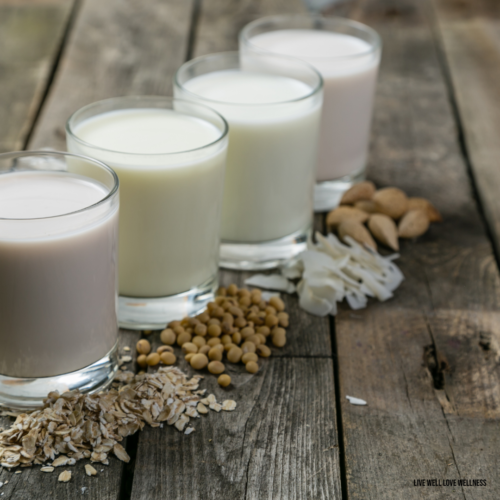
The third tip I have for you, is to understand the alternative choices that you have access to these days.
There are so many gluten free options, and there’s so many dairy free options.
Let’s talk about alternatives to gluten first.
Alternatives to Gluten based Products
Gluten is most commonly found in your wheat based flours, however it is also found lurking in mainly other places.
It can be found in
- Soy sauces;
- Licorice,
- Gummy Candy,
- Lollies,
- Supplements,
- Processed Foods,
- Broth,
- Medication,
- Toothpaste,
- Taco Seasoning,
- Imitation crab,
- Frosting,
- Biscuits, and
- Oats.
There are so many different places that we can find gluten, and the list does go on.
You can find dairy in many different products as well, however just make sure that you read your labels.
The packaging will usually say whether it contains gluten or dairy, and if it doesn’t tell you, assume that it’s in there, because if it doesn’t include it, they are very likely to tell you it is gluten free or dairy free.
Because there are so many intolerances these days, it’s quite common that the manufacturer will tell you on the packaging if it’s infact gluten free or dairy free.
An alternative is not hard to find anymore.
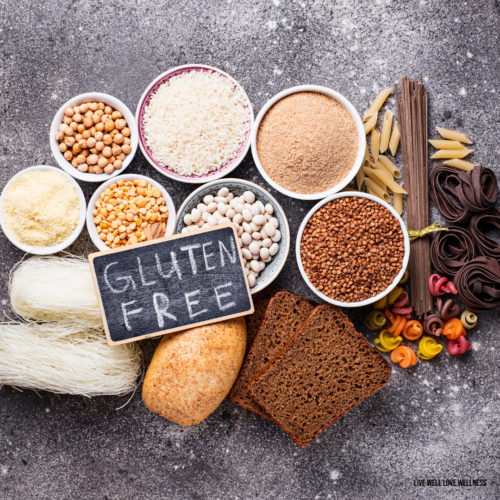
Gluten free options are readily available.
You can choose a gluten free flour, and they are easily obtainable, however, make sure that it does not contain additives and other artificial ingredients.
You want to make sure that flour is made from real food even though it is gluten free, and that chemicals have not been used to substitute the gluten.
When we choose gluten free options, there is oat flour, almond meal, coconut flour, tapioca flour, arrowroot flour, and buckwheat flour.
There’s so many different options that you can use instead, and so many recipes available.
A quick scan of Pinterest brings up so many gluten free recipes.
There’s even Instagram and socials, and online recipes and blogs that have amazing content when it comes to gluten free recipes.
Go for a hunt and you will find so many.
Alternatives to Dairy based Products
When we think about dairy free, we have soy as an option, however you have to be careful with soy because it’s heavily processed and it can also be genetically modified.
I say, ”stay away from soy if you can, and look to some of the other milks like almond or macadamia or coconut milk which are all great.”
Oat milk is also another popular option.
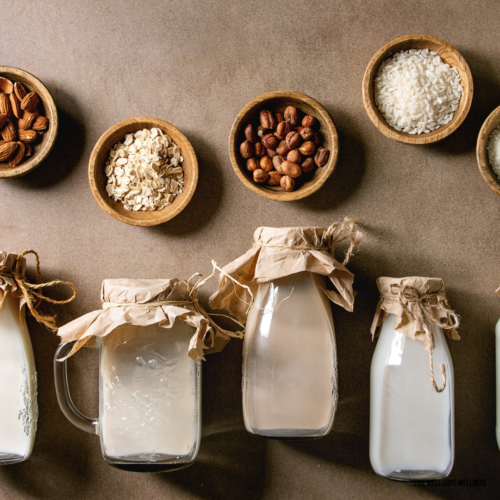
There are a vast array of different options that are also high in calcium that you can be using instead of dairy milk, so start to understand what your options are.
If you can choose organic, that is even better, as you will avoid unwanted herbicides and pesticides.
Start to really consider the alternative options you have for going gluten and dairy free, and these will definitely make the process easier and less overwhelming.
The third tip I had for you is to start to choose alternative options, find alternatives that you like, and that work for you.
Tip 4 – Start Making Small Changes
The fourth tip I have is to start making small changes.
You don’t have to go completely gluten and dairy free overnight, but you can do small things each day to start working towards your goals.
Going Gluten Free
We find gluten in our breads, we find it in our processed foods, we find it in our supplements and our sauces and all the things I discussed above.
Small changes may look different for different people as they navigate their own relationship with bread and the foods that contain gluten.
Start to identify the foods that you can easily be switched out for non gluten options, and the first thing that will help you is reading your labels.
Identify what you are actually consuming that has gluten and start making better choices.
Start to slowly switch the products you bring into your home, for gluten free options and you will start to see changes occur.
Then start to look at alternatives for bread, or instead of choosing one type of bread you may choose another, healthier option in the beginning.
For instance, sourdough is a great alternative option when you are starting to make changes. They believe the body tolerates sourdough better because it is fermented.
Sourdough is said to show less reactions in some and therefore it may be a great place to start as normal everyday bread presents issues such as highly refined and processed white or multi grain breads.
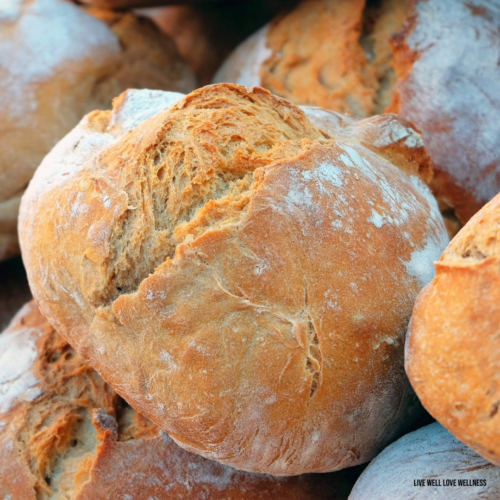
Sourdough is much gentler on the digestive system and may be a better choice as you start to find alternatives.
You can also consider eating ancient grains that have not been modified such as spelt, einkorn and emmer wheat.
As you can see, there are other options that you can be choosing when you start on this process, and as you start to consume less and less, it will just become easier and easier to live without.
A lot of what we do and what we eat is habitual, and we know to grab a piece of bread and have a piece of toast for breakfast, because that’s what we do every single day.
It does become a mindset shift to eat differently.
If you are looking for some easy recipes to start with, recipes you and the kids will love then check out our gluten and dairy free recipe card ebook for some simple and delicious ideas.
Going Dairy Free
So when you think about dairy, you need to consider what dairy products you currently consume and find alternatives so we can start to make better choices.
A commonly gentler option is goat’s cheese or milk which is better on our digestive system than a dairy based product.
You could try some coconut yoghurt instead of dairy milk yogurt.
Try a nut milk in your tea or coffee rather than dairy milk.
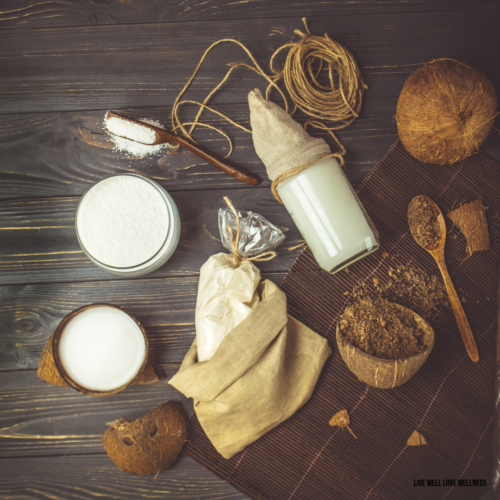
Choose products that are less processed, less pasteurised and not homogenised.
Start switching out one product at a time as to make changes progressively without it being too overwhelming.
So the fourth tip is to start by making small changes,
Tip 5 – Support your Body Naturally
The fifth tip I have for you today is to support your body naturally as you navigate this journey.
As you start to improve your health and start making those small changes you will find the discomfort may linger or not completely disapaite depending on how quickly you make the changes needed.
If you are still having bloating or you are still getting those anxious feelings, the head tension or the back or shoulder tension, then having a natural support is important.
There may still be things going on in the body that need support and attention.
Remember it will take some time for the inflammation to leave your body and it is wise to provide natural support for the inflammation as you progress on your journey.
Natural, proactive health care is key to living a healthy lifestyle and will instil healthy habits if you start now.
We know a lot of over the counter pharmaceutical based products have side effects and are very disruptive to the gut.
If you can be choosing something natural that doesn’t work against your body, that is going to be really supportive, that is a much better option.
And as we move through the process of going gluten and dairy free with natural solutions at our fingertips we are actually supporting our body to heal.
We are supporting our body to come back into balance and alignment.
This is a big change for many and as you move through this process, it is important to understand your options.
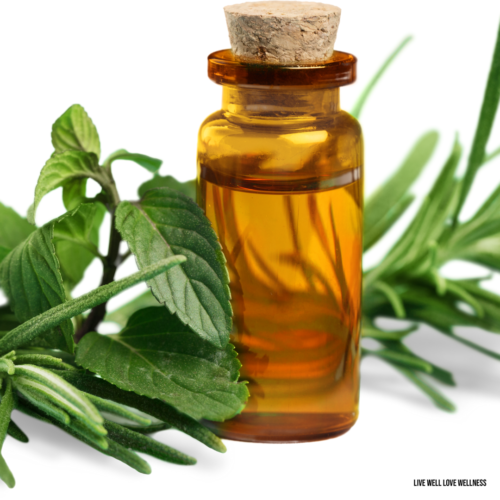
What are your natural options?
Well, we know for certain particular plants or plant extracts carry great digestive support.
Plants like peppermint, ginger or fennel, even cardamom is great for the digestive system.
I personally love to use these in the essential oil form, use aromatically, topically or put a drop of essential oil in water.
I like to put a drop of essential oil in a capsule and take it internally or rub it on my feet or rub it on my belly with some fractionated coconut oil or a carrier oil of choice.
My body responds really well to essential oils, so I utilise them to support my body.
In fact, I have a whole collection of oils that support our proactive everyday wellness.
It might be that you have a peppermint tea or consume some ginger and find that to be really supportive.
It might be a tummy roller for you children.
Whatever you choose to do, just try and choose a natural option because natural options are gentle on your body, and we don’t want to be putting more pressure on our already busy and inflamed body.
As we move through the process of going gluten and dairy free, there is going to be a lot of adjusting and a lot of changes our body will experience as it starts to heal and mend itself.
The beautiful thing about natural options is they support our body in any given moment as we make this transition.
They offer no threat, just support and relief for an inflamed body trying to restore alignment.
Tip 5 is to lean on natural solutions to support your inflamed body as you go gluten and dairy free.
Recap on the Top 5 Tips on How to go Gluten and Dairy Free for Better Health
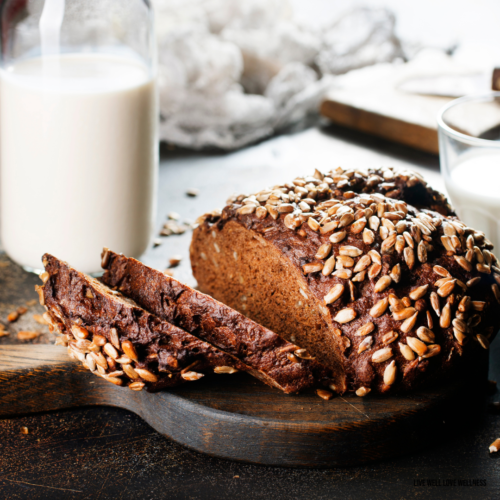
So just to recap on those five tips:
Number one: is to understand why you are going gluten and dairy free in the first place, which will really support all the other aspects as you start to really make all those changes in your life.
Number two: is understand the impacts that gluten and dairy have on the body. Understand what it is that these two foods are doing to your body and really understand that process.
Number three: is start to look at alternatives. Start looking for different types of recipes and researching. Gaining your own knowledge is part of the process as well.
Number four: is start making those small changes like I spoke about and work through what you’re going to tackle first and how you’re going to work through that process.
Number five: is support your body naturally wherever possible. If you have discomfort, use something that is going to support rather than harm your body or put extra unnecessary load on your body at any given time. I personally love my natural mumma toolkit.
Hopefully you have enjoyed what I’ve shared on going gluten and dairy free. I do however have more tips I’d love to share with you and you can grab my complete checklist below:
I know that your body will thank you from going gluten and dairy free.
If you would like to hear me talk about the top 5 tips for going gluten and dairy free you can watch my video below:
Going gluten and dairy free is not a simple task, especially if habitual patterns need to change.
However the good new is that any effort you put in to going gluten and dairy free will change your life for the better and will all be worth it!
Need more inspiration you can check out our blog post on clean eating or check out our gluten and dairy free recipe book.
